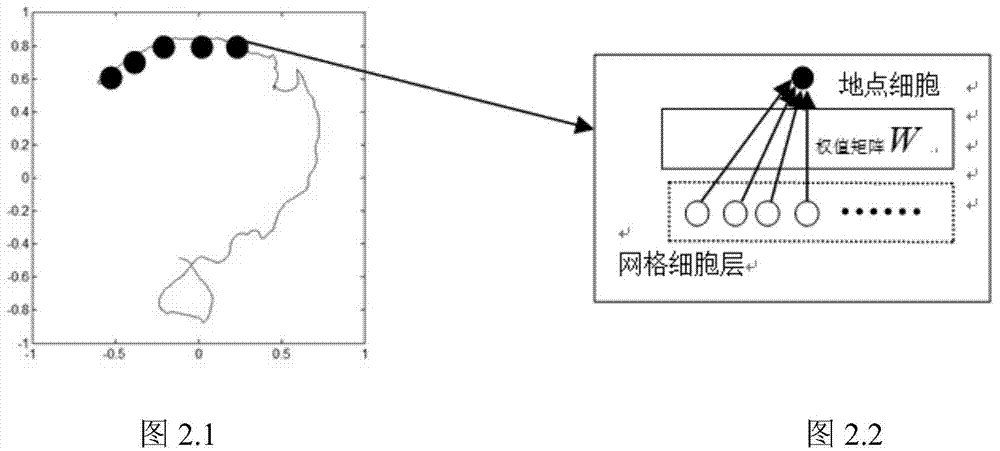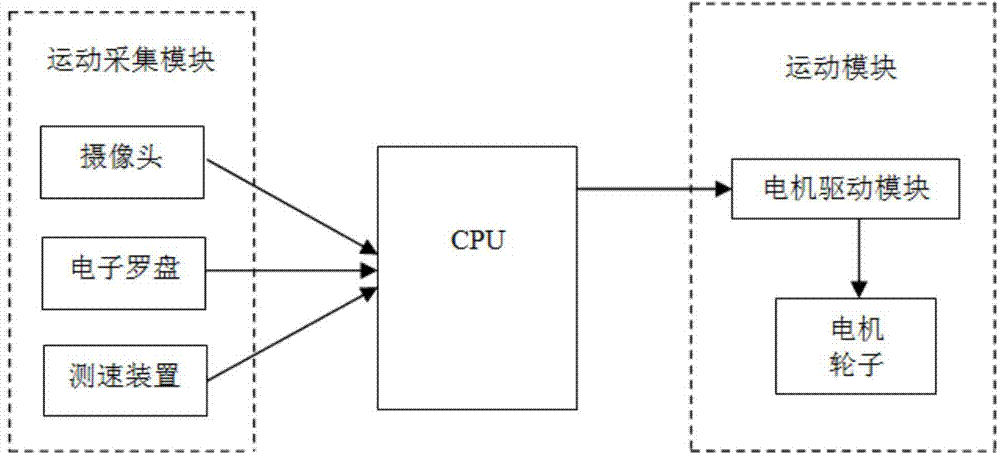Robot simulated navigation method based on rat brain-hippocampal navigation
A navigation method and robot technology, applied in the field of robot bionic navigation, can solve the problems of high hardware system requirements and non-compliance, etc.
- Summary
- Abstract
- Description
- Claims
- Application Information
AI Technical Summary
Problems solved by technology
Method used
Image
Examples
Embodiment Construction
[0064] Implementation scheme of the present invention is:
[0065] 1 Imitating the hippocampus structure of the mouse brain, the robot CPU pre-defines the header cell layer h, the grid cell layer G, and the location cell layer P. Each grid cell responds with different spacing, orientation, and phase, and each location cell will be independently Corresponding to a location in a space plane, the locations corresponding to cells in different locations are different;
[0066] 2 The robot explores the environment, and the robot uses the motion acquisition device to collect the motion direction Φ and speed v as input information, and input it to the CPU;
[0067] 3 The grid cell response model adopts the vibration interference model, the principle is as follows Figure 7 As shown, the velocity v determines the θ wave oscillation frequency and phase, and different θ waves are generated in different motion directions Φ. After phase difference integration, the motion direction Φ and v...
PUM
 Login to View More
Login to View More Abstract
Description
Claims
Application Information
 Login to View More
Login to View More - R&D
- Intellectual Property
- Life Sciences
- Materials
- Tech Scout
- Unparalleled Data Quality
- Higher Quality Content
- 60% Fewer Hallucinations
Browse by: Latest US Patents, China's latest patents, Technical Efficacy Thesaurus, Application Domain, Technology Topic, Popular Technical Reports.
© 2025 PatSnap. All rights reserved.Legal|Privacy policy|Modern Slavery Act Transparency Statement|Sitemap|About US| Contact US: help@patsnap.com



